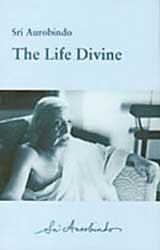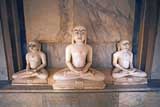Integral Health
The metaphysical foundation of Integral Health
The synthesis of Western and Eastern world-views
In the second and third chapters of The Life Divine, Sri Aurobindo dwells upon the materialistic basis of Western culture, vis-à-vis the ascetic dimension in Eastern culture. It is necessary to understand the differentiation to construct a greater and fulfilling Matter-Spirit synthesis. It is also interesting that this differentiation helps us to understand the different perspectives of health and well-being in the East and the West.
The materialistic culture of the West eulogised Matter and in the process dismissed Spirit as an illusion of imagination, a construction of fantasy, a chimerical concept , an anti-thesis of Science, serving at its best as an ‘opium’ to hoodwink the masses. The spiritual tradition of the East held Matter to be an illusion of the senses, the body too ephemeral to deserve attention in preference to the soul which is immortal, and the world of human transactions too false to merit a rebirth.
The Western world-view
It is natural that the two distinct world-views had unique influences in all areas of life including health and well-being. In the West, the triumphant march of materialism led to an aggressive, expansionist, opulent, affluent, hedonistic and consumerist culture. Moreover, the West, unlike the Indian tradition, believes in only one lifespan available to each individual. The result of this combination is a burning passion for affluence and an intense pursuit of pleasure that had to be immediately achieved in a lifetime and hence a concentrated focus on health and well-being to live life to its fullest potential.
The priority on health and well-being in a materialistic culture of plenitude had enormous beneficial effects on the improvement of basic health, nutrition and healthcare delivery systems. Rapid strides were made in the fields of communicable diseases. Social, environmental and ecological factors were dealt with exhaustively. The basic needs of society, like sanitation, safe drinking water, improved habitat, improved communication systems, universalisation of education, development of sports and physical culture, which are at the same time basic prerequisites for health, were all consolidated in the developed nations of the West by the beginning of the 20th century (it is another story that the rapid development in the West was possible due to the economic exploitation of the colonial regimes in Asia and Africa).
Everything comes not only with a price but also as a debt of the Karma of getting rich by exploiting poorer countries. By the end of the 20th century, the culture of affluence, opulence and consumerism began to take its toll. There was a spurt in lifestyle diseases. High-flying executives, who represent a symbol of excellence, became more prone to ischemic heart disease. Substance abuse became a hydra-headed monster as the narco-dollars were tax-proof and recession-proof. Obesity and bulimic binges signalled a gluttonous mindset. Depression and existential neuroses became a sinister phenomenon. Suicides rivalled homicides for statistical attention. True, morbidity and mortality had reduced but there arose a huge population of demented elderly. Sexual freedom and usurp-ation of values broke all conventional forms including the family. The culture of hedonism brought new diseases like AIDS. When the 21st century came, the devaluation of pristine ideals coupled with a globalisation of consumerism, triggered off new forms of fundamentalism in nonWestern parts of the world that threaten to disrupt civilisation as a whole. Terrorism per se has emerged from the fringes to become a mainstream phenomenon with its consequences on the developing body and mind. Not surprisingly, Sri Aurobindo comments, “Man has created a system of civilisation which has become too big for his limited mental capacity and understanding and his still more limited spiritual and moral capacity to utilise and manage, a too dangerous servant of his blundering ego and its appetites. For no greater seeing mind, no intuitive soul of knowledge has yet come to his surface of consciousness which could make this basic fullness of life a condition for the free growth of something that exceeded it (1).”
The Eastern world-view
The Eastern world-view glorified divinity and supported the ascetic dimension which brought spiritual plenitude but impoverished life. An experiential contact with the Supreme Consciousness in its Transcendent poise was so fulfilling that the world of human transactions became illusory, meaningless and nonconsequential. “Therefore all voices are joined in one great consensus that not in this world of the dualities can there be our kingdom of heaven, but beyond…. And through many centuries a great army of shining witnesses, saints and teachers, names sacred to Indian memory and dominant in Indian imagination, have borne always the same witness and swelled always the same lofty and distant appeal, — renunciation the sole path of knowledge, acceptance of physical life the act of the ignorant, cessation from birth the right use of human birth, the call of the Spirit, the recoil from Matter (2).”
The glorification of Spirit came with a neglect of material life. Sri Aurobindo explains that this trend persisted for two thousand years since Buddhism disturbed the earlier balance of ancient Indian thought.
“Not that the sense of cosmic illusion is the whole of Indian thought…. Nor has some attempt at an adjustment between the two terms been wanting… But all have lived in the shadow of the great Refusal and the final end of life for all is the garb of the ascetic. The general conception of existence has been permeated with the Buddhistic theory of the chain of Karma and with the consequent antinomy of bondage and liberation, bondage by birth, liberation by cessation from birth (3).”
Such a world-view contributed to the element of compassion in healing. But it also neglected the physical body to such an extent that the great heritage of Āyurveda lost its pristine essence. The final phase of degeneration happened when the Indian subcontinent was invaded and emasculated by greedy Western powers and by the end of the 19th century, the region went through unprecedented famines that had never occurred so frequently in the past. As a result, large masses suffered from malnutrition, unhygienic conditions, infectious diseases, a lack of health infrastructure and an abject disregard of the body. The belief in rebirth led to a certain casual attitude in caring for oneself; if something could not be achieved in this life, the heavens need not fall as there were future lives to finish the unfinished agenda of this life. But this belief in rebirth had its positive side too, as one did not have the urgency to compete with Time. After all, the sense of time-urgency is one of the most important stressors of modern life.
The synthesis
Both the Western and Eastern world-views have their limitations.
“In India, if the result has been a great heaping up of the treasures of the Spirit, — or of some of them, — it has also been a great bankruptcy of Life; in Europe, the fullness of riches and the triumphant mastery of this world’s powers and possessions have progressed towards an equal bankruptcy in the things of the Spirit (4).”
The Time-Spirit justifiably moves towards a synthesis, “Therefore the time grows ripe and the tendency of the world moves towards a new and comprehensive affirmation in thought and in inner and outer experience and to its corollary, a new and rich self-fulfilment in an integral human existence for the individual and for the race (5).”
Integral Health provides a paradigm for the synthesis of Western and Eastern world-views by reconciling Matter and Spirit along the hierarchy of consciousness. Consciousness is a pluridimensional reality and the phenomenon of integration works simultaneously at different levels:
(a) The integration of the physical, vital and mental planes of consciousness,
(b) The integration of the different planes around the ego-surpassing soul-principle in evolution,
(c) The integration of the inner and outer beings under the influence of the inmost being within the individual formation (resulting in an integration of the dimensions of personality and impersonality, of time and timelessness, of silence and activity),
(d) The integration of the individual with the cosmic consciousness,
(e) The integration of the inconscience with the superconscience,
(f) The integration of the experiences of the soul-principle in evolution (the Psychic Being) with the soulpoise above the manifestation (the Jivātman).
Consciousness is the underlying reality of existence and provides the substrate to link the materialistic and spiritual paradigms, the ground for the multi-levelled synthesis. But this linkage, which has never been attempted before, needs a new matrix, a new field for manifestation, a new body. Integral Health aims to facilitate the preparation of the template for the future evolutionary body.
References
1. Sri Aurobindo. The Life Divine, SABCL, Volume 19. Pondicherry; Sri Aurobindo Ashram Trust, 1970, p. 1053.
2. Sri Aurobindo. The Life Divine, SABCL, Volume 18. Pondicherry; Sri Aurobindo Ashram Trust, 1970, p. 23.
3. Ibid.
4. Ibid. p. 9.
5. Ibid.
Share with us (Comments, contributions, opinions)
When reproducing this feature, please credit NAMAH, and give the byline. Please send us cuttings.




